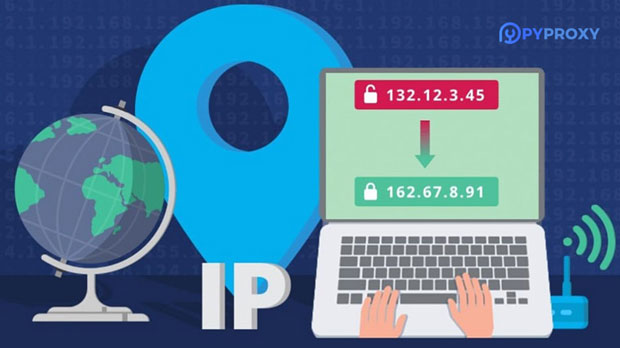When acquiring socks5 proxies, security should be one of the top priorities. These proxies are widely used for anonymous browsing, bypassing geo-restrictions, and enhancing privacy. However, while they offer these advantages, they also come with potential security risks that users must carefully consider. Ensuring the integrity, reliability, and confidentiality of the proxy service is essential to avoid data leaks, identity theft, and cyberattacks. This article will delve into the key security concerns to consider when obtaining Socks5 proxies, how to safeguard your data, and what to watch out for during the process. By understanding these risks, users can make informed decisions and enhance their security posture when utilizing proxy services. Understanding Socks5 ProxiesBefore delving into the security considerations, it is essential to understand what Socks5 proxies are and how they function. Socks5 is the latest version of the SOCKS (Socket Secure) protocol, which is used to route traffic between a client and server via a proxy. Unlike HTTP or HTTPS proxies, which only work with specific types of traffic (web browsing, for instance), Socks5 proxies can handle any type of internet traffic—whether it’s browsing, file sharing, or streaming.This flexibility makes Socks5 proxies appealing for various use cases, such as improving privacy, bypassing network restrictions, or accessing region-locked content. However, the wide variety of applications also means that security issues can arise in different ways. Let’s now explore the security risks you should be aware of.Key Security Risks When Acquiring Socks5 Proxies1. Data Interception and Man-in-the-Middle AttacksOne of the most significant risks when using Socks5 proxies is the potential for data interception. If the proxy provider does not implement proper encryption methods or if the proxy itself is insecure, any data transmitted through the proxy can be intercepted by malicious actors. This risk is particularly concerning when dealing with sensitive information, such as login credentials or financial data.A more advanced threat is a Man-in-the-Middle (MitM) attack, where an attacker intercepts the communication between the client and the destination server. To mitigate this risk, it is crucial to ensure that the socks5 proxy provider uses secure encryption and does not allow third-party interference.2. Untrustworthy Proxy ProvidersAnother significant concern is the trustworthiness of the Socks5 proxy provider. Some providers may log your activity or sell your data to third parties, defeating the purpose of using a proxy in the first place. Even if the proxy service claims to be anonymous, there could still be risks if the provider is not transparent about its logging policies or is based in a jurisdiction with weak privacy laws.Before selecting a proxy service, always research the provider’s reputation, terms of service, and privacy policies. Ensure they have a clear, no-logs policy and operate in a region that enforces strong data protection laws.3. Proxy Server Location and JurisdictionThe geographical location of the proxy server is another important security consideration. The jurisdiction in which the server is located can affect the level of privacy and security provided by the proxy. For example, some countries have surveillance laws or data retention policies that may compromise user privacy. Additionally, certain jurisdictions may compel proxy providers to share user data with government agencies. It is essential to consider the legal implications of using a proxy service based in a particular country. Opting for proxy servers located in privacy-friendly regions can significantly enhance security and anonymity.4. DNS and IP LeaksOne common security vulnerability with Socks5 proxies is DNS and IP leaks. DNS leaks occur when your DNS requests are sent outside of the proxy tunnel, exposing your browsing activity to your Internet Service Provider (ISP) or any third-party eavesdropper. Similarly, IP leaks can reveal your real IP address despite using a proxy, potentially compromising your anonymity.To prevent these leaks, ensure that the Socks5 proxy service provides DNS leak protection and regularly check for leaks using online tools. Some proxy providers offer built-in protections against these types of leaks, which should be prioritized during your search.5. Proxy Authentication and EncryptionAuthentication is another critical element in ensuring the security of a Socks5 proxy connection. Some Socks5 proxy services allow for user authentication via a username and password, which adds a layer of security. However, if these credentials are weak or not securely transmitted, they can be exploited by attackers.Encryption is another essential aspect to consider. While the Socks5 protocol itself does not provide encryption by default, certain proxy providers may offer encryption options to protect your data from eavesdropping. Always prioritize Socks5 proxies that support secure communication through encryption protocols like SSL or TLS.6. Reliability of the Proxy ServiceReliability is another security-related consideration. If the proxy service is unreliable, it may result in disruptions or incomplete data transfer, which can expose sensitive information. Furthermore, some unreliable proxies may redirect you to malicious sites or inject ads into your browsing session, leading to potential security risks such as malware infections.Ensure the Socks5 proxy service is stable, well-maintained, and regularly updated to fix vulnerabilities. Look for services with good user feedback and technical support that can address any security issues promptly.Best Practices to Enhance Security When Using Socks5 Proxies1. Use Additional EncryptionTo protect your data while using a Socks5 proxy, consider using additional encryption layers. For example, using a VPN in conjunction with a Socks5 proxy adds another level of encryption to your data, ensuring that your traffic is even harder to intercept. A VPN encrypts your entire internet connection, providing an added security layer for all your online activities.2. Regularly Test for LeaksTo ensure your proxy is functioning securely, it’s important to test for potential DNS and IP leaks regularly. There are various online tools available that can detect leaks and help you verify whether your proxy is working as intended. Performing this check frequently ensures that no sensitive information is exposed.3. Stay Informed About Proxy Security UpdatesThe world of cybersecurity is ever-evolving, with new vulnerabilities emerging constantly. It’s important to stay informed about any updates or security patches related to the Socks5 protocol or your chosen proxy provider. Regularly checking for updates and understanding emerging threats can help you stay one step ahead of potential security risks.ConclusionAcquiring a Socks5 proxy offers many advantages, particularly in terms of privacy and accessing restricted content. However, the security risks associated with Socks5 proxies should not be underestimated. By considering the factors outlined above, such as the reliability of the provider, the security of the connection, and the potential for data leaks, users can significantly reduce the risk of exposure and ensure their online activities remain secure. Ultimately, a well-informed approach to choosing and configuring Socks5 proxies can go a long way in maintaining both security and anonymity in an increasingly digital world.
Jan 02, 2025






















































